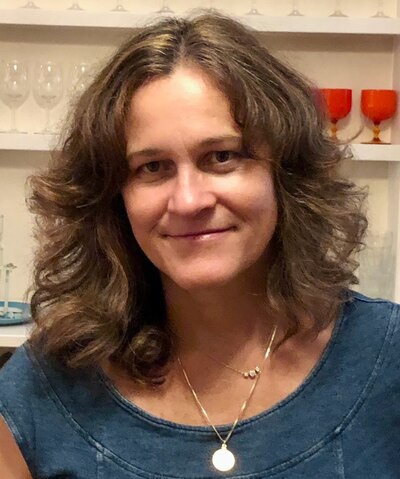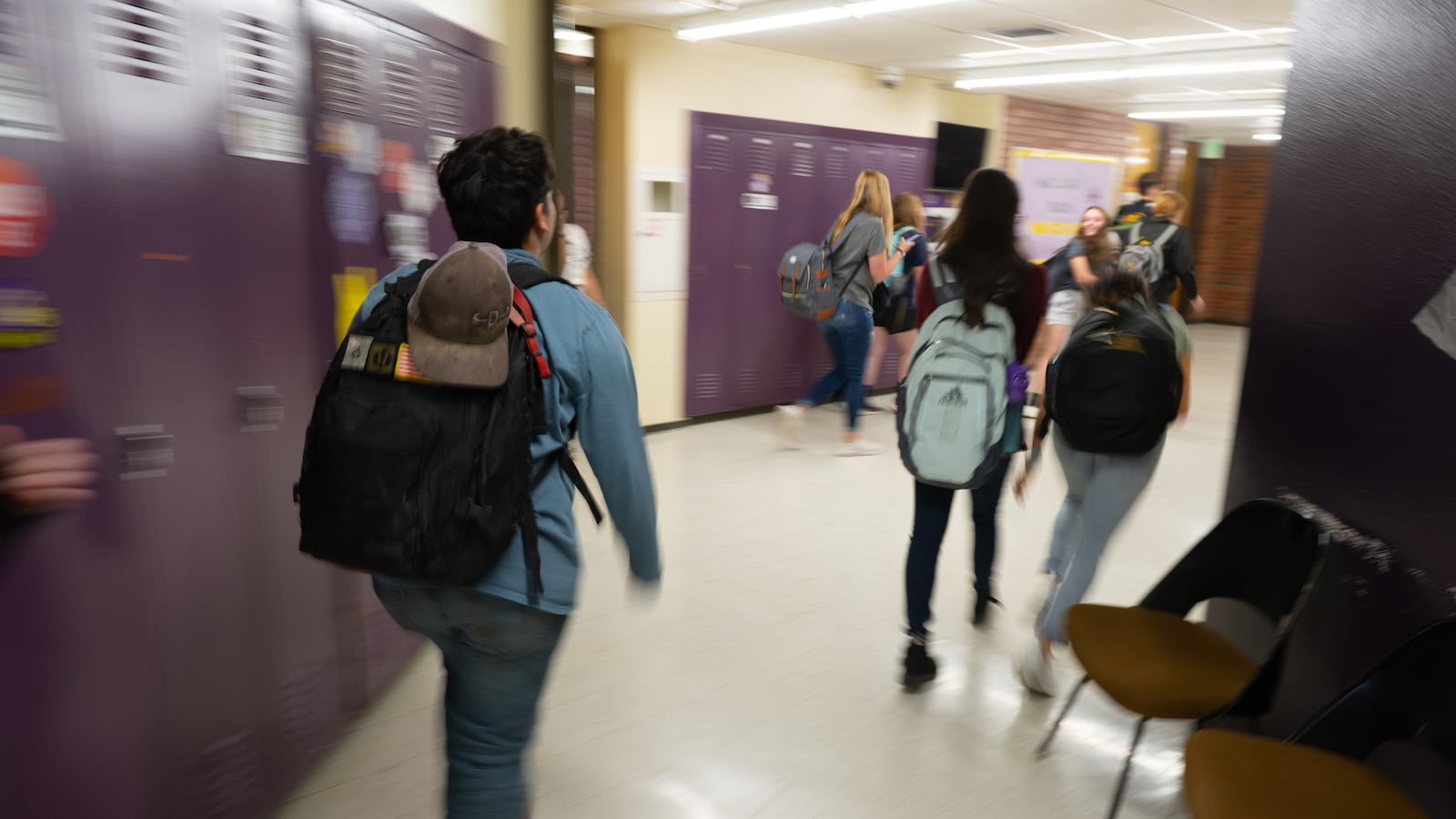Get the latest news on New York City Public Schools in our free newsletter, delivered to your inbox every weekday morning.
Just before midnight, attempting to make the deadline for extra materials required for admission by some of New York City’s most selective public high schools, I sat watching the upload time for my 13-year-old’s video extend from six minutes to 11 to 15.
I’d been trying to upload it for two hours. I’d cleared my cache, rebooted my computer, toggled my Wi-Fi, and checked the Applying to High School in NYC Facebook group. According to the city website, I should rename the file, make sure it was less than 500 MB, try a different browser. When the upload failed for the eighth time, I was struggling not to cry.
The only thing left was changing the file format. With my husband peering over my shoulder, I frantically found a free file converter online. It was 12:15 a.m., but, miraculously, it worked.

Afterward, as I lay in the dark, adrenaline still coursing through my body, I thought about how this step might have gone for someone who didn’t have a computer or Wi-Fi at home, whose data limits on their cell phone plan couldn’t handle eight failed upload attempts, who didn’t have an adult who could spare two hours trying to figure it out, who didn’t speak English.
It was yet another hurdle in a high school application process that, according to Chancellor David Banks, aims to increase access for “communities who have been historically locked out of screened schools” while also rewarding students who’ve earned high grades. In practice, it rewards parents and caregivers like myself who have the time and resources to navigate an incredibly complex system.
Even as someone who has advocated for integration and equity for years, I got sucked in by the Hunger Games mentality that the system seems designed to provoke. I felt compelled to play along because my son really wanted a high school that might be more challenging after a middle school experience that often felt too easy. I struggled to find a way through the ethical compromises. Meantime, the process, perhaps by design, kept me so busy and overwhelmed that I had little opportunity — or incentive — to dwell on the inequities.
To start, caregivers and parents must sift through 700 high school programs while trying to wrap their heads around five different admissions methods with varying additional requirements (entrance exam, art portfolios, auditions, essays, and videos). Then you must try to secure a spot for school tours that can get snatched up quicker than a Taylor Swift ticket. Once you begin to narrow the selection down to the 12 choices a student can rank on their application, you are left to calculate the impact of a student’s academic tier, priority group, and 32-digit lottery number alongside each school’s applicant-to-seat ratio to determine their chances of being matched with a school by an algorithm so complex it took a Nobel Prize winner to design it.
It’s no surprise that the process spurred a Facebook support group of 4,000 members, with parents sharing “decision trees” and spreadsheets to keep it all straight. I dutifully made my own spreadsheet, hustled to secure my son spots on tours, and scoured the posts for intel on “hidden gems.” It felt more and more unfair that he should get a leg up simply because his mother had the time, energy, and privilege to master the system.
Throughout the process, I saw some parents with privilege perceive the system as working against them. They pointed out their disadvantage as many selective high schools participate in Diversity in Admissions, which allows schools to set aside a portion of their available seats, ranging from 12 to 88%, for families who qualify for free or reduced-price lunch, are English Language learners, or share other criteria.
Principals sometimes fed into these feelings. At a tour of one selective high school last November, a principal reassured a mostly white audience they “shouldn’t worry about” the DIA set-asides, because those seats don’t usually get filled. The school supported DIA, he went on, “as long as they could maintain their academic standards.”
And yet I’m heartened by how some of my peers in the Facebook group have come to recognize the high school application process’s inordinate demands. Parents volunteered to do research for overwhelmed parents, inspiring me to offer my help to other parents in my son’s grade, with a few of them taking me up on it. Members shared articles about the inequities of the system, encouraged parents to consider schools outside “the usual suspects,” and checked racially coded comments about a school’s climate. The group administrators created documents to simplify the process for DIA families and English language learners, though these parents represent a small portion of the overall group.
As the application deadline loomed, an anonymous poster who identified themselves as a DOE employee asked members what could be done to make the process more equitable. The suggestions came pouring in: get rid of academic screens and essay requirements, provide more translation services, offer open houses at different times and in different languages, encourage middle school guidance counselors to bring students on high school tours, bring back the printed high school directory, provide transportation to high schools, better training for guidance counselors, and work to combat the scarcity mentality that pits student against student and creates the impression that there are only a few high-quality choices.
Spending time researching the hundreds of school options does reveal that New York City high schools offer something for everyone: flight simulators to study aerodynamics; a planetarium to study the stars; a chance to work on sailboats or airplane engines or for fashion brands; certificate programs in plumbing, construction or coding that sets up students for high paying jobs that don’t require a college degree; professional-level training in drama, dance, music, filmmaking, and art; recording studios and 3-D printers; internships at hospitals or restaurants or research labs; options to study Arabic, Mandarin, Russian, Japanese, or sign language, and an opportunity to learn alongside classmates who bring different lived experiences to the classroom discussions.
As for me, I’d quickly abandoned my spreadsheet and lost my energy for scouring school websites and attending tours. I got tired of playing along. It was hard enough to get my son to write his application essays. When I filled up the bottom of his list of 12 high schools with choices we never visited or even knew much about, picked mostly because they didn’t have additional requirements, I felt a pang of guilt that I was failing him.
It’s possible it won’t matter. He could get an offer from a specialized high school, another admissions process – based on a single test – that can hardly be described as equitable. (The ethical questions don’t end, despite my efforts to start an afterschool test prep class at my son’s school, open to all.) While I think his academic drive and easygoing nature will help him succeed wherever he lands, I also know that if it turns out to not be a good fit, I have the resources to find something better for him next year.
While the city fiddles at the margins to “increase access,” big changes to this process seem unlikely. Each of us, then, is left to muddle our way through and help one another. I hope parents and caregivers can continue to shift our mentality from high school Hunger Games to one where every student can win.
Bliss Broyard’s journalism focuses on racial and economic justice and has appeared in the New York Times, New York Magazine, and the New Yorker, among other publications. She’s the author of the award-winning memoir, “One Drop: My Father’s Hidden Life–A Story of Race and Family Secrets,” and is at work on a sequel. You can find her on Twitter @blissbroyard.


